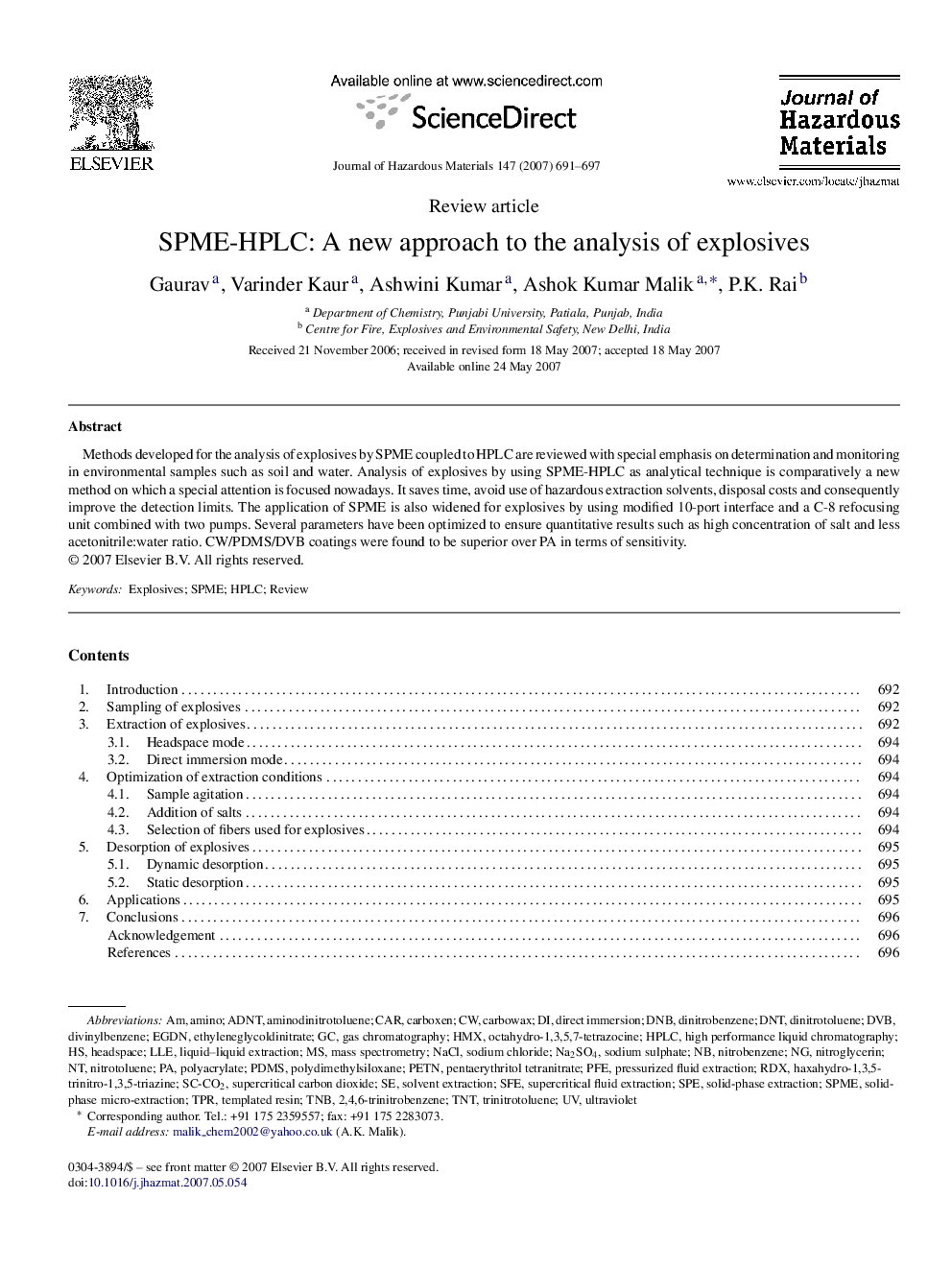| Article ID | Journal | Published Year | Pages | File Type |
|---|---|---|---|---|
| 583856 | Journal of Hazardous Materials | 2007 | 7 Pages |
Abstract
Methods developed for the analysis of explosives by SPME coupled to HPLC are reviewed with special emphasis on determination and monitoring in environmental samples such as soil and water. Analysis of explosives by using SPME-HPLC as analytical technique is comparatively a new method on which a special attention is focused nowadays. It saves time, avoid use of hazardous extraction solvents, disposal costs and consequently improve the detection limits. The application of SPME is also widened for explosives by using modified 10-port interface and a C-8 refocusing unit combined with two pumps. Several parameters have been optimized to ensure quantitative results such as high concentration of salt and less acetonitrile:water ratio. CW/PDMS/DVB coatings were found to be superior over PA in terms of sensitivity.
Keywords
NaClPETNNa2SO4SC-CO2TNBDNTHMXRDXSPESFEPFEDNBSPMEDVBEGDNCarboxenPDMSADNTLLEAminoSolvent extractionSupercritical fluid extractionSolid-phase extractionPressurized fluid extractionLiquid–liquid extractionUltravioletpentaerythritol tetranitrateTrinitrotolueneTnTDinitrobenzeneDinitrotoluenedivinylbenzeneSupercritical carbon dioxideTPRSodium chlorideSodium sulphateMass spectrometryDirect immersionheadspaceCARReviewExplosivesSolid-phase micro-extractionnitrobenzeneNitrotolueneNitroglycerinPolyacrylatePolydimethylsiloxanecarbowaxhigh performance liquid chromatographyHPLCGas chromatography
Related Topics
Physical Sciences and Engineering
Chemical Engineering
Chemical Health and Safety
Authors
Gaurav Gaurav, Varinder Kaur, Ashwini Kumar, Ashok Kumar Malik, P.K. Rai,
